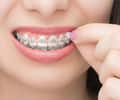Symptoms of Enamel Dysplasia
Patients suffering from this type of dysplasia may produce some very distinct symptoms:
- Pits and Fissures - Back teeth, such as molars and premolars, often erupt completely with grooves and hollows in the enamel. These are called pits and fissures, and their purpose is to help you grind food without damaging your teeth. The hollows become deeper, however, if the enamel is too thin, to begin with. Over time, the buildup of plaque and bacteria in the grooves releases acids that eat away at already insufficient enamel – resulting in clear signs of dysplasia.
- Thin Enamel Surface - Enamel dysplasia can also be seen in an unusually thin covering on the tooth. If your tooth enamel is thinner than it should be, you're likely to detect a translucent appearance on the teeth' surface. Tooth enamel can become worn due to numerous conditions in adults, but children and teens teeth who have weakened teeth surfaces are more likely to carry some degree of enamel dysplasia.
- Discoloration - One of the most common signs of enamel malformation is tooth surface discoloration. Those with this condition often develop mottling on the outside of their teeth. This effect can resemble that of patients who have had rickets. The marks can be white, brown, or yellow and result from trauma to the overly thin tooth enamel. It may also come out of fluorosis, which describes the presence of too much fluoride during the development of the teeth.
- Hypersensitivity - The thinner the enamel, the less protection your teeth have and the more sensitive they are to heat, cold, and other extreme stimuli. A high level of sensitivity is a common symptom of enamel dysplasia. However, it can be caused by other dental conditions as well. Adults can choose dental products that help soothe tooth sensitivity while preserving the enamel they do have, such as a sensitivity-specific toothpaste. Younger children may need a different approach to dental hygiene to reduce their dental sensitivity.
- Higher Risk of Caries - Because of thinner enamel and reduced protection for your teeth, patients with dysplasia have a higher tendency to develop cavities and other dental issues. Being aware of this risk and preventing decay with a good oral care routine is the best way to reduce your likelihood of developing caries.
Enamel dysplasia is not something you should take lightly, but it can be treated with good oral care and help from your dental professional. Be on the lookout for any of these symptoms and speak with your dental professional if you suspect enamel dysplasia. They will help get your smile back on track.
Oral Care Center articles are reviewed by an oral health medical professional. This information is for educational purposes only. This content is not intended to be a substitute for professional medical advice, diagnosis or treatment. Always seek the advice of your dentist, physician or other qualified healthcare provider.
ORAL HEALTH QUIZ
What's behind your smile?
Take our Oral Health assessment to get the most from your oral care routine
ORAL HEALTH QUIZ
What's behind your smile?
Take our Oral Health assessment to get the most from your oral care routine
Join Us
Get the best of your oral health routine and take it to the next level with expert advice, recommendations, products and solutions and special offers.
Join Us
Get the best of your oral health routine and take it to the next level with expert advice, recommendations, products and solutions and special offers.















